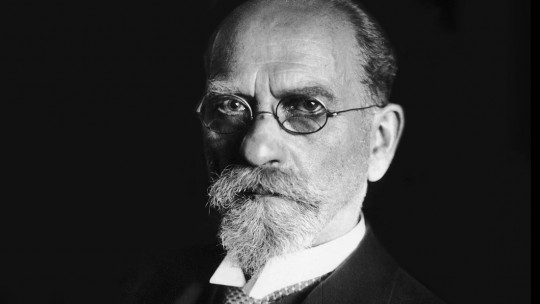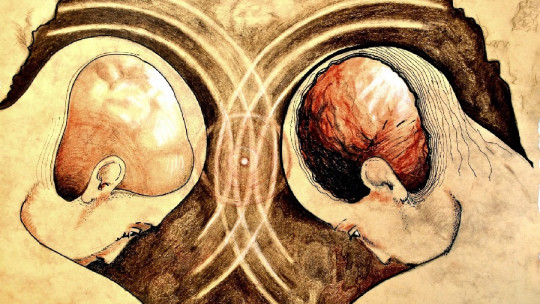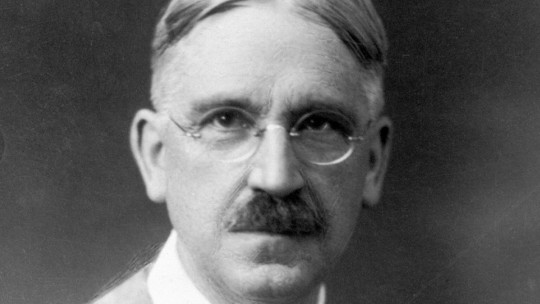Much has been tried to understand about the world that surrounds us, trying to do it in the most objective and empirical way possible, however, sometimes, the experiences and sensations that we have of our reality can acquire great importance, especially in the context therapeutic.
Phenomenology is a philosophical branch that tries to understand and give importance to how people experience the world in which we live both in terms of its more physical aspect and in terms of social interaction and emotionality.
Let’s look in more depth at this complex philosophical current, what its relationship is with psychology and which have been its most notable authors.
Phenomenology and its relationship with psychology
Phenomenology is a philosophical movement that emerged during the 20th century, whose etymological origin is ‘phaídomenon’ (in Greek, ‘appearance, manifestation’) and ‘logos’ (‘science, knowledge’). Thus, it can be understood as ‘the study of manifestations.
In this branch of philosophy, the aim is to investigate and describe phenomena or objects as people experience them This idea is not only applicable in the field of psychology, but also in many other fields of knowledge, making phenomenology encompass very varied elements depending on the subject to which it is applied.
In the case of psychology, phenomenology is responsible for the study of the structures of consciousness from a first-person perspective, that is, taking into account how the person themselves experience it.
What is he in charge of?
Clearly defining what phenomenology refers to with its field of study is certainly a complicated task.
As we were already commenting, it could be extracted as a fundamental idea within this current, which in turn is a method and philosophical branch, that of ‘go to understand the things themselves’ that is, trying to understand the world without prejudices, in the form of prior knowledge and theories, that may influence its interpretation.
origins
Although it is true that we have said that this discipline and philosophical current emerged in the 20th century, its roots go back much earlier. In fact, the first person to use the term ‘phenomenology’ was the Swiss mathematician and philosopher Johann Heinrich Lambert who used it in reference to the method he had proposed to explain how to distinguish between truth, illusion and error.
However, the first time the term was defined in the way it is understood today is in the work of German philosopher George Friedrich Hegel, ‘A Phenomenology of Spirit’ (1807). In short, in this work he tried to understand and explain the development of the human mind from the meaning of one’s own existence.
But really, phenomenology is not established as the philosophical movement, both theoretical and applied, that it is today in the middle of the 20th century, when Edmund Husserl , who we talk about in more detail later, founded it methodologically speaking. He was the author of the foundation of transcendental phenomenology and, thanks to him, the movement was transformed into an entire line of complex thought that continues to have great weight within the human sciences today.
Phenomenological method and the figure of Edmund Husserl
The phenomenological method not only acquires importance at a philosophical level, but, as we were already commenting previously, it has been of great contribution in disciplines that try to understand human beings, such as sociology, psychology and pedagogy.
Edmund Husserl is considered the person most responsible for the vision and idea of phenomenology today. Within his theory, The idea of not presupposing absolutely anything about the perceived and studied reality was defended Thus, it can be interpreted that it was contrary to concepts that, although they are widely accepted in society, are really made up of prejudices and preconceptions, such as the idea of ’common sense’ and discriminatory ideologies.
The phenomenological method, both the one proposed by Husserl himself and the current conception within psychology, follows the following three stages:
1. Examine all the contents of consciousness
This indicates that the person is aware that the object they are perceiving is something sensitive, that it is there.
2. Be self-aware
In this phase, the person determines whether the perceived contents really exist or, on the contrary, are made up of ideas, that is, they are part of their imagination.
3. Suspend phenomenological consciousness
This is nothing more than feeling the perceived object for itself, without entering into reasoning as to whether it is real or not, just grasping it.
As can be understood based on these three phases, it is logical to understand why the phenomenological methodology has been accused of being too subjective. After all, it focuses on how the person experiences a phenomenon, not how, in more objective terms, the sense organs receive it in the form of a stimulus and how the brain, on a physiological level, interprets it.
The truth is that, today, phenomenology continues to aspire to become a movement that tries to combine both the subjective aspects that the person experiences with an interpretation that is as objective as possible of this interpretation. What there is no doubt is that the method is more qualitative than quantitative.
Representatives of this current
In addition to Edmund Husserl, there are many great philosophers and thinkers of the last two centuries who can be considered great representatives of the current, both when it was formally founded and when it was still being originated.
Of very important mention is the figure of Franz Brentano, who has been credited with being the origin of modern phenomenology. Even before the use of the term as it is known today, there were numerous great figures in history who proposed phenomenological foundations.
Among them you can find the figure of David Hume, who in his work ‘Treatise on Human Nature’ shows that he is a supporter of the phenomenological approach, although it had not yet been fully conceptualized. Another notable is Immanuel Kant, who in ‘Critique of Pure Reason’ makes a distinction between objects, understood as phenomena, formed and assimilated by human sensitivity, and noumena, which could be translated as ‘things-in-themselves’ ( for example, thought itself).
Already towards the middle of the 20th century, the figures of Martin Heidegger and Maurice Merleau-Ponty are notable.
Phenomenological therapies
Traditionally, humanistically oriented therapies have been related to the foundations of phenomenology. From the phenomenological point of view, the therapeutic situation consists of a singular context in which, at least, the intersubjective interaction of two phenomenologies occurs, that is, the experiences of the patient himself and the experiences of the therapist himself.
Thus, the patient lives his reality in a certain way, which, in turn, is reinterpreted by the psychotherapist himself to whom he confesses his internal world Of course, the psychologist is not going to interpret the patient’s world in the same way as the patient does. That is, it will be a reinterpretation of an interpretation. However, the idea that emerges from humanistic therapies is that one should try to understand the patient’s own vision when he is referring to how he sees and feels the world.
Among the therapies, mostly of a humanistic-existential orientation, that have emphasized the phenomenological fields of both the patient and the psychotherapist himself can be found.
1. Person-centered psychotherapy
This therapy, formulated by Carl Rogers, is based on reflecting, clarifying and transforming the patient’s internal world as he describes it to his therapist.
Since he formulated it, Rogers defended the idea that the therapist should empathically understand the reality experienced by the patient, and clinical descriptions of these experiences should be dispensed with.
Later, He himself came to highlight the importance of the fact that two people share their experiential worlds just as they are experiencing them, and thus favor a mutual enrichment between the worlds perceived by patient and therapist.
2. Body psychotherapy
This therapy, whose foundations are found in the thought of Wilhelm Reich, originally defended the immediate phenomenological observation that the therapist makes of the patient’s body and gestures
Subsequently, this therapy gave greater weight to the psychological and bodily processes as they are experienced and described phenomenologically by the patient during the psychotherapy session.
Post-Reichian psychotherapy has been developed with the aim of trying to transform the experience that the client/patient has of himself and his own bodily reality.
3. Gestalt
Gestalt therapists have been highlighting the clinical usefulness of contrasting and classifying the most notable differences between the patient’s phenomenological experience compared to that of the psychologist.









